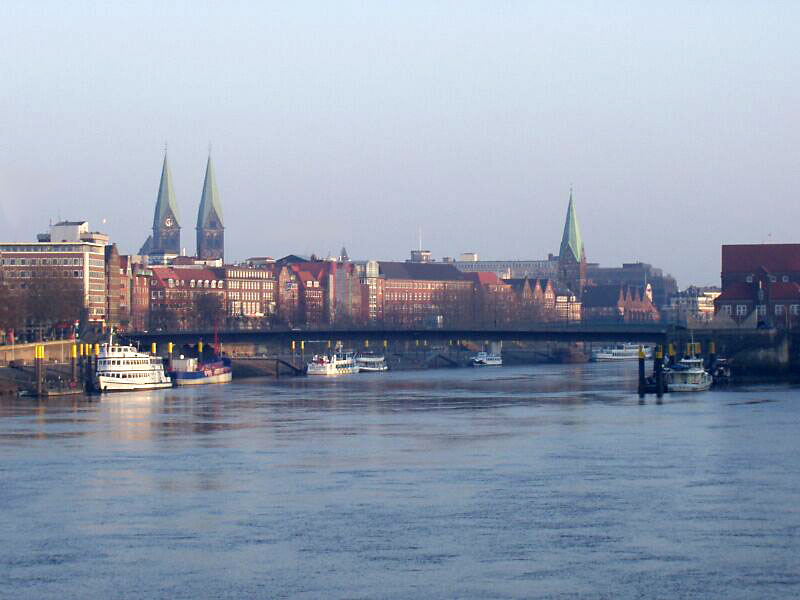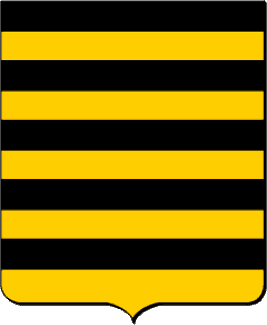|
Schwanewede
Schwanewede is a municipality in the district of Osterholz, in Lower Saxony, Germany. It is situated approximately 14 km west of Osterholz-Scharmbeck, and 22 km northwest of Bremen. It belonged to the Prince-Archbishopric of Bremen. In 1648, the Prince-Archbishopric was transformed into the Duchy of Bremen, which first was ruled by the Swedish in personal union A personal union is the combination of two or more State (polity), states that have the same monarch while their boundaries, laws, and interests remain distinct. A real union, by contrast, would involve the constituent states being to some e .... In 1715, the Hanoverian Crown started to rule over Schwanwede until 1823, in which the Duchy was abolished, leading all of its territory to become part of the Stade Region. Schwanewede consists of 12 smaller villages which form the municipality of Schwanewede, namely Beckedorf, Löhnhorst, Meyenburg, Aschwarden, Neuenkirchen, Brundorf, Eggestedt, Harriersand, Hi ... [...More Info...] [...Related Items...] OR: [Wikipedia] [Google] [Baidu] |
Stade (region)
, 1823–1885), Governor (''Regierungspräsident'', 1885–1978) , leader1 = , year_leader1 = 1823–1841 , leader2 = , year_leader2 = 1863–1872 , leader3 = , year_leader3 = 1922–1933 , leader4 = , year_leader4 = 1950–1954 , leader5 = , year_leader5 = 1958–1959 , leader6 = , year_leader6 = 1959–1973 , title_deputy = Vice-governor (german: link=no, Regierungsvizepräsident, 1885–1978) , deputy1 = , year_deputy1 = , deputy2 = , year_deputy2 = , legislature = no autonomous legislation, power only deriving from the state government , house1 = , house2 = , type_house1 = , type_house2 = , era = 19th and 20th century , event_pre = real union of Bremen-Verden with Hanover , date_pre = 1823 , event_start = annexed by Prussia , date_start ... [...More Info...] [...Related Items...] OR: [Wikipedia] [Google] [Baidu] |
Osterholz
Osterholz is a district (''Landkreis'') in Lower Saxony, Germany. It is bounded by (from the west and clockwise) the districts of Wesermarsch, Cuxhaven, Rotenburg and Verden, and by the city of Bremen. History Originally the prince-archbishops of Bremen ruled the area comprising today's district. In 1648 the Prince-Archbishopric was transformed into the Duchy of Bremen, which was first ruled in personal union by the Swedish and from 1715 on by the Hanoverian Crown. In 1807 the ephemeral Kingdom of Westphalia annexed the Duchy, before France annexed it in 1810, there comprising a part of the département Bouches-du-Weser. In 1813 the Duchy was restored to the Electorate of Hanover, which - after its upgrade to the Kingdom of Hanover in 1814 - incorporated the Duchy in a real union and the Ducal territory became part of the Stade Region, established in 1823. In 1866 the Kingdom of Hanover fell to Prussia, forming the Province of Hanover. The Prussian administration establish ... [...More Info...] [...Related Items...] OR: [Wikipedia] [Google] [Baidu] |
Bremen
Bremen (Low German also: ''Breem'' or ''Bräm''), officially the City Municipality of Bremen (german: Stadtgemeinde Bremen, ), is the capital of the Germany, German States of Germany, state Bremen (state), Free Hanseatic City of Bremen (''Freie Hansestadt Bremen''), a two-city-state consisting of the cities of Bremen and Bremerhaven. With about 570,000 inhabitants, the Hanseatic League, Hanseatic city is the List of cities in Germany by population, 11th largest city of Germany and the second largest city in Northern Germany after Hamburg. Bremen is the largest city on the River Weser, the longest river flowing entirely in Germany, lying some upstream from its River mouth, mouth into the North Sea, and is surrounded by the state of Lower Saxony. A commercial and industrial city, Bremen is, together with Oldenburg (city), Oldenburg and Bremerhaven, part of the Bremen/Oldenburg Metropolitan Region, with 2.5 million people. Bremen is contiguous with the Lower Saxon towns of Delmenhor ... [...More Info...] [...Related Items...] OR: [Wikipedia] [Google] [Baidu] |
Farge Concentration Camp
Bremen-Farge concentration camp Farge was subcamp number 179 of the Neuengamme concentration camp complex. It was established in the autumn of 1943. When established, it was the second largest Neuengamme satellite camp, although the only known prisoner count is 2092, recorded in March 1945. The prisoners were used as slave labour at the U-boot Bunker Valentin. The camp was sited at a large, naval–fuel–oil, storage facility; some prisoners were accommodated in an empty, giant, underground, fuel tank. The camp was commanded by an army captain, Ulrich Wahl, and the prisoners were guarded by a detachment of naval infantry. Only a handful of SS men were involved in the running of the camp. The prisoners included German political prisoners, as well as Russian, Polish, French and Greek prisoners of war. Work on the Valentin bunker took place around the clock, with workers forced to work 12–hour shifts. The heavy work resulted in a high death rate amongst prisoners. However, only ... [...More Info...] [...Related Items...] OR: [Wikipedia] [Google] [Baidu] |
Landesamt Für Statistik Niedersachsen ...
The statistical offices of the German states ( German: ''Statistische Landesämter'') carry out the task of collecting official statistics in Germany together and in cooperation with the Federal Statistical Office. The implementation of statistics according to Article 83 of the constitution is executed at state level. The federal government has, under Article 73 (1) 11. of the constitution, the exclusive legislation for the "statistics for federal purposes." There are 14 statistical offices for the 16 states: See also * Federal Statistical Office of Germany References {{Reflist Germany Statistical offices Germany Germany, officially the Federal Republic of Germany (FRG),, is a country in Central Europe. It is the most populous member state of the European Union. Germany lies between the Baltic and North Sea to the north and the Alps to the sou ... [...More Info...] [...Related Items...] OR: [Wikipedia] [Google] [Baidu] |
Lower Saxony
Lower Saxony (german: Niedersachsen ; nds, Neddersassen; stq, Läichsaksen) is a German state (') in northwestern Germany. It is the second-largest state by land area, with , and fourth-largest in population (8 million in 2021) among the 16 ' federated as the Federal Republic of Germany. In rural areas, Northern Low Saxon and Saterland Frisian language, Saterland Frisian are still spoken, albeit in declining numbers. Lower Saxony borders on (from north and clockwise) the North Sea, the states of Schleswig-Holstein, Hamburg, , Brandenburg, Saxony-Anhalt, Thuringia, Hesse and North Rhine-Westphalia, and the Netherlands. Furthermore, the Bremen (state), state of Bremen forms two enclaves within Lower Saxony, one being the city of Bremen, the other its seaport, Bremerhaven (which is a semi-enclave, as it has a coastline). Lower Saxony thus borders more neighbours than any other single '. The state's largest cities are state capital Hanover, Braunschweig (Brunswick), Lüneburg, ... [...More Info...] [...Related Items...] OR: [Wikipedia] [Google] [Baidu] |
Germany
Germany, officially the Federal Republic of Germany (FRG),, is a country in Central Europe. It is the most populous member state of the European Union. Germany lies between the Baltic and North Sea to the north and the Alps to the south. Its 16 constituent states have a total population of over 84 million in an area of . It borders Denmark to the north, Poland and Czechia to the east, Austria and Switzerland to the south, and France, Luxembourg, Belgium, and the Netherlands to the west. The nation's capital and most populous city is Berlin and its main financial centre is Frankfurt; the largest urban area is the Ruhr. Settlement in what is now Germany began in the Lower Paleolithic, with various tribes inhabiting it from the Neolithic onward, chiefly the Celts. Various Germanic tribes have inhabited the northern parts of modern Germany since classical antiquity. A region named Germania was documented before AD 100. In 962, the Kingdom of Germany formed the ... [...More Info...] [...Related Items...] OR: [Wikipedia] [Google] [Baidu] |
Osterholz-Scharmbeck
Osterholz-Scharmbeck (; Northern Low Saxon: ''Oosterholt-Scharmbeek'') is a town and the capital of the district of Osterholz, in Lower Saxony, Germany. Osterholz-Scharmbeck is situated in between the cities of Bremen and Bremerhaven. Geography Neighbouring places * Bremen (22 km) * Delmenhorst (31 km) * Achim (37 km) * Bremerhaven (39 km) * Brake (40 km) * Zeven (41 km) * Bremervörde (43 km) * Nordenham (46 km) * Oldenburg (48 km) * Rotenburg (50 km) Division of the town Official parts * Freißenbüttel * Garlstedt * Heilshorn * Hülseberg * Ohlenstedt * Pennigbüttel * Sandhausen * Scharmbeckstotel * Teufelsmoor Historical parts * Ahrensfelde * Altenbrück * Altendamm * Auf Dem Raden * Auf Dem Rusch * Bargten * Bredbeck * Buschhausen * Büttel * Feldhof * Haslah * Hinter Dem Horn * Kattenhorn * Lange Heide * Lintel * Muskau * Myhle * Niedersandhausen * Ovelgönne * Ruschkamp * Settenbeck * Vorwohlde * Wester ... [...More Info...] [...Related Items...] OR: [Wikipedia] [Google] [Baidu] |
Archdiocese Of Bremen
The Prince-Archbishopric of Bremen (german: Fürsterzbistum Bremen) — not to be confused with the modern Archdiocese of Hamburg, founded in 1994 — was an ecclesiastical principality (787–1566/1648) of the Holy Roman Empire and the Catholic Church that after its definitive secularization in 1648 became the hereditary Duchy of Bremen (german: Herzogtum Bremen). The prince-archbishopric, which was under the secular rule of the archbishop, consisted of about a third of the diocesan territory. The city of Bremen was ''de facto'' (since 1186) and ''de jure'' (since 1646) not part of the prince-archbishopric. Most of the prince-archbishopric lay rather in the area to the north of the ''city of Bremen'', between the Weser and Elbe rivers. Even more confusingly, parts of the prince-archbishopric belonged in religious respect to the neighbouring Diocese of Verden, making up 10% of its diocesan territory. History In the different historical struggles for expansion of territory or pr ... [...More Info...] [...Related Items...] OR: [Wikipedia] [Google] [Baidu] |
Duchy Of Bremen
), which is a public-law corporation established in 1865 succeeding the estates of the Prince-Archbishopric of Bremen (established in 1397), now providing the local fire insurance in the shown area and supporting with its surplusses cultural efforts in and scientific works on the area. The ambit covers almost exactly the former Duchies of Bremen and Verden except of some of Bremen's northern quarters, incorporated in 1939, which prior belonged to the Landschaft's ambit too. , capital = Stade , common_languages = Low Saxon, German , title_leader = Monarch , leader1 = Christina , year_leader1 = 1648–1654 , leader2 = Charles I Gustav , year_leader2 = 1654–1660 , leader3 = Charles IICharles III , year_leader3 = 1660–1697•1697–1712 , leader4 = George I Louis , year_leader4 = 1715–1727 , leader5 = George II August ... [...More Info...] [...Related Items...] OR: [Wikipedia] [Google] [Baidu] |
Personal Union
A personal union is the combination of two or more State (polity), states that have the same monarch while their boundaries, laws, and interests remain distinct. A real union, by contrast, would involve the constituent states being to some extent interlinked, such as by sharing some limited governmental institutions. Unlike the personal union, in a federation and a unitary state, a central (federal) government spanning all member states exists, with the degree of self-governance distinguishing the two. The ruler in a personal union does not need to be a hereditary monarch. The term was coined by German jurist Johann Stephan Pütter, introducing it into ''Elementa iuris publici germanici'' (Elements of German Public Law) of 1760. Personal unions can arise for several reasons, such as: * inheritance through a dynastic union, e.g. Louis X of France inherited Kingdom of France, France from Philip IV of France, his father and Kingdom of Navarre, Navarre from Joan I of Navarre, hi ... [...More Info...] [...Related Items...] OR: [Wikipedia] [Google] [Baidu] |


